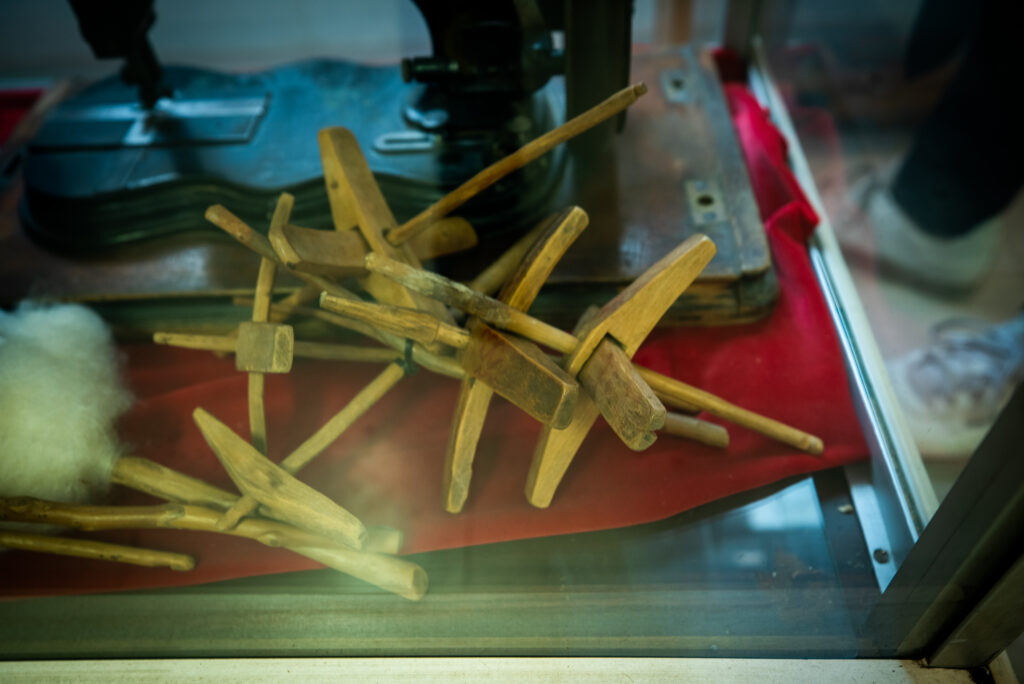
Spinning wool yarn is a major part of the preparatory process for weaving. Producing thin yarn was a painstaking, time-consuming task that required plenty of patience. Three tools were mostly used during spinning: a distaff, a spindle, and a whorl. The yarn was then wound into a skein using a spool.
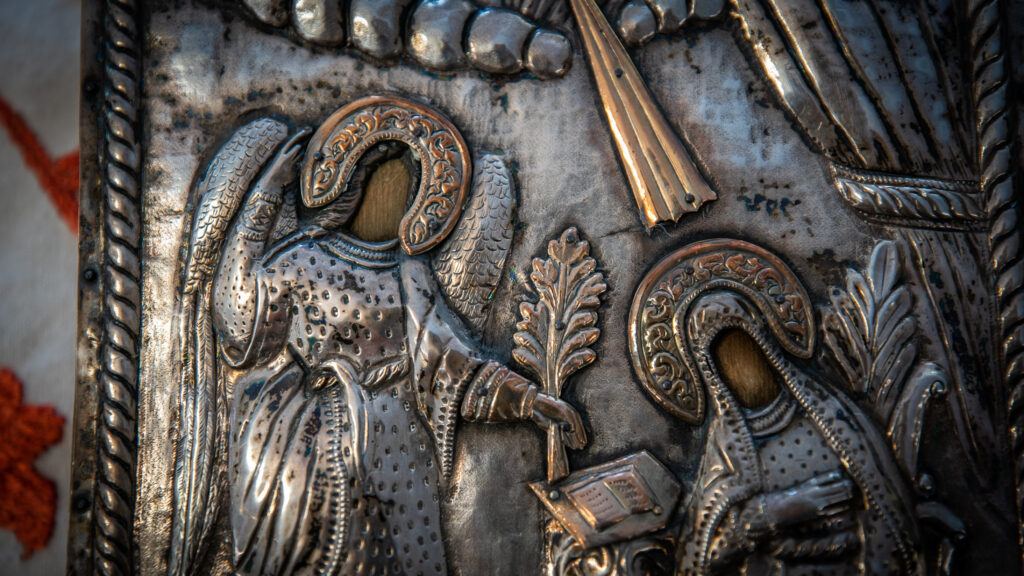
At the end of September, the whole family reached the wooden railway platform at Punta and then boarded a ship to Lesvos. From there, they went to Limnos, the birthplace of Charalambos Tsardanidis. A year later, they arrived in Piraeus, where they stayed for a year behind Evangelistria church, and then moved to Ano Kipseli, with the family finally settling down near Koliatsou Square in 1926. Throughout this long and tumultuous journey, Grandma Koralia and her family were accompanied and protected by the icon of the Annunciation.
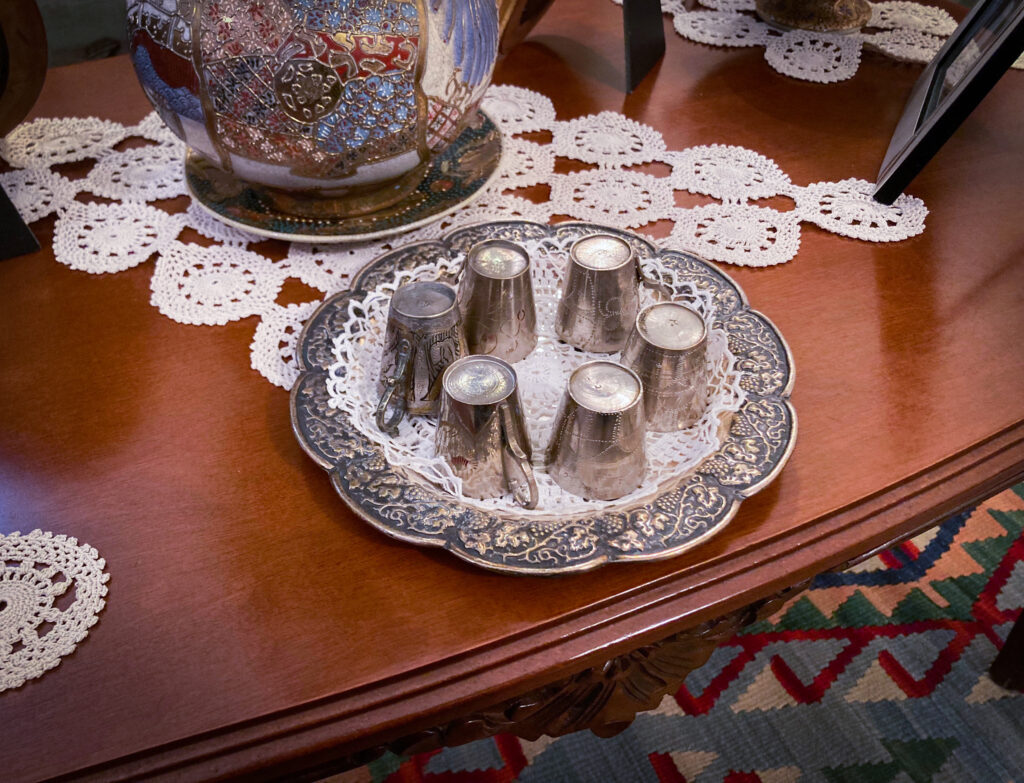
On October 2, 1924, according to the terms of the Lausanne Treaty, Angeliki, her three children and her mother-in-law, Nymfodora Chatzitheodoridou, left their home carrying seven bundles with them in which they tried to fit their most useful and valuable possessions. The family made it to Mersin where they boarded the ship Destounis and travelled to Greece. Half the ship’s passengers disembarked in Evoia and the other half in Piraeus.
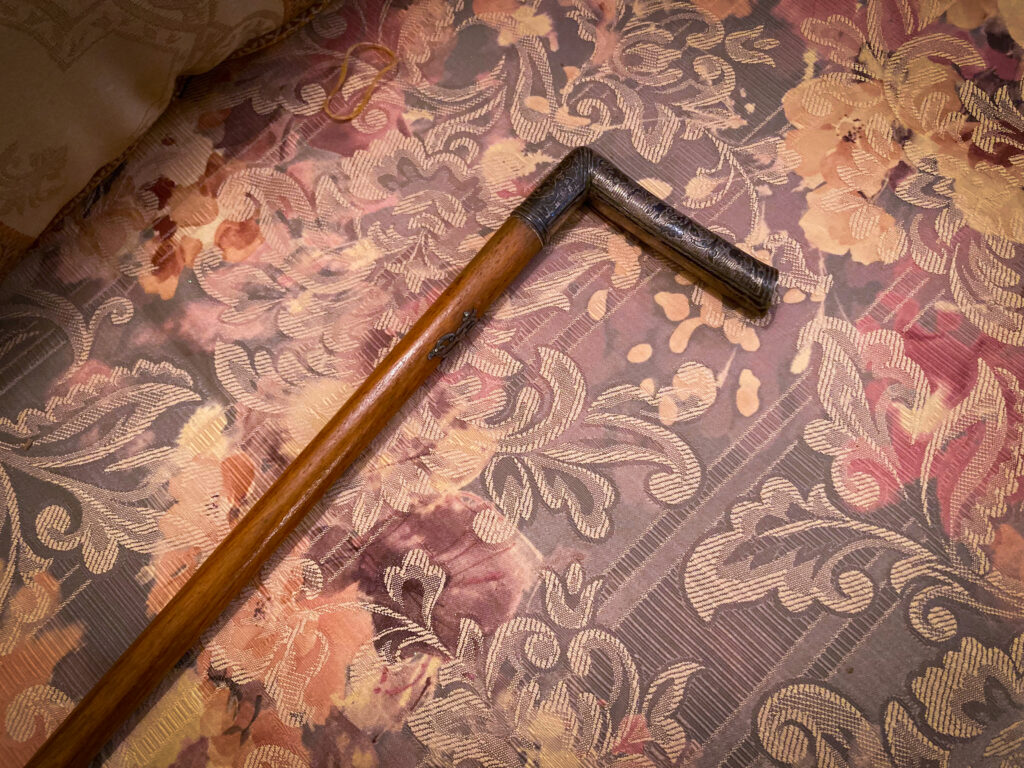
Sotiris Marsellos, a retired theologian, keeps his grandfather’s walking stick in the living room of his refugee house. Theologos Chatzitheodoridis, Sotiris’ grandfather, was a textile merchant in Constantinople, but was originally from Sinasos.
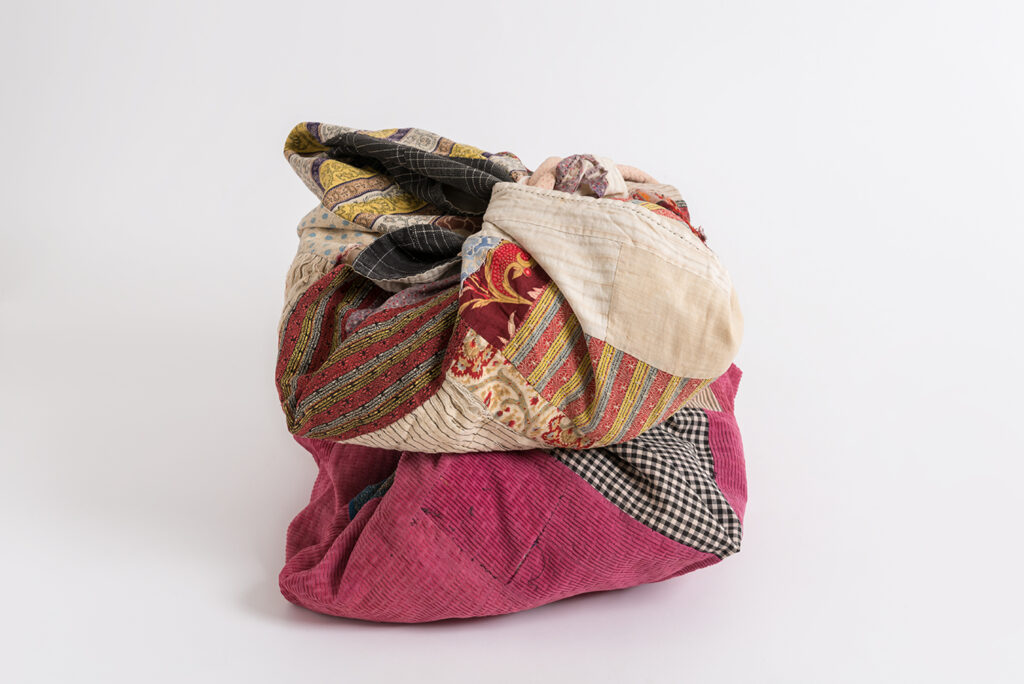
These bundles are made up of pieces of cotton fabric sewn together and reinforced with a lining to make them sturdier. Not many bundles of this kind are preserved today, but for many years they were the main means of carrying and transporting objects, which makes them a common sight in photographs depicting the population exchange process.
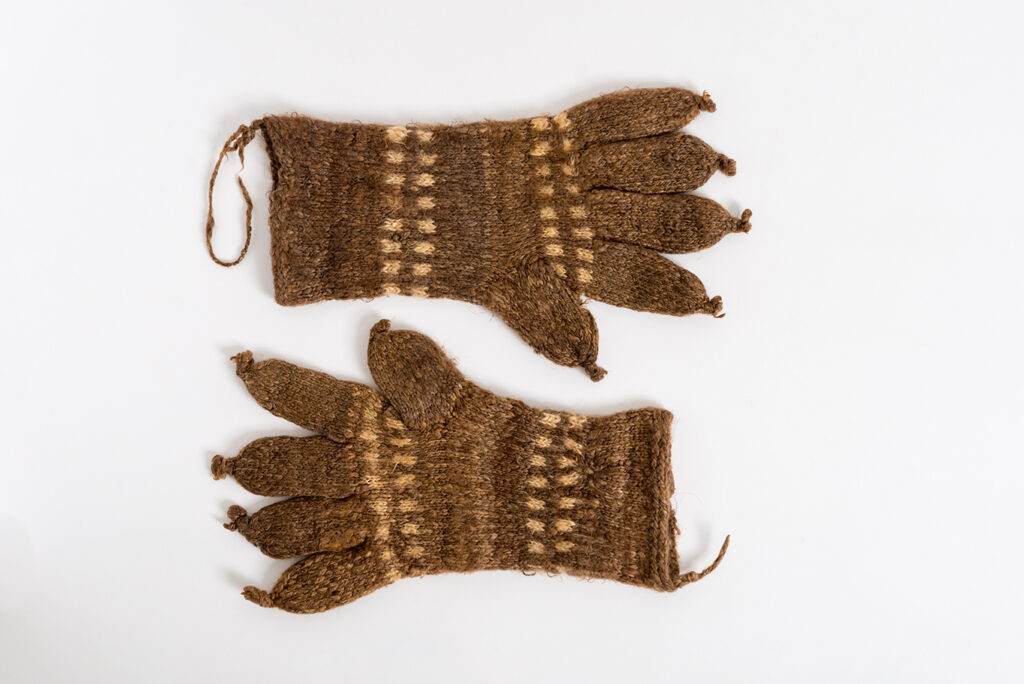
Konstantinos Nikolaidis was born in 1873 in Niğde and so was his wife, Ourania. Konstantinos worked for the local branch of the Ottoman Tobacco Company known as Régie. The couple had four children, two sons and two daughters.
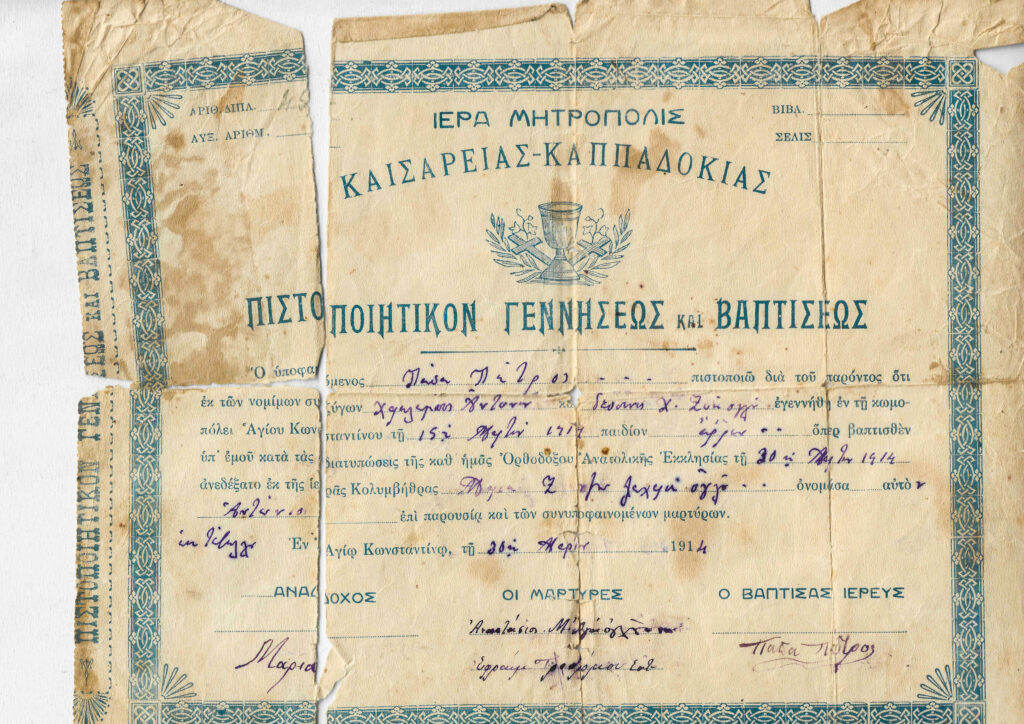
The family of Charalambos Sarantidis and Despoina Nikolaidou lived in a small town called Agios Konstantinos in the province of Kaisareia, which was a local financial and commercial hub. On March 15, 1914, the couple had their first baby. Right after birth, the baby boy developed serious health issues and the doctors thought he would not survive. The parents rushed to baptise him, which is why Antonis Sarantidis’ ‘certificate of birth and baptism’ was issued only five days after his birth, dated March 20, 1914.
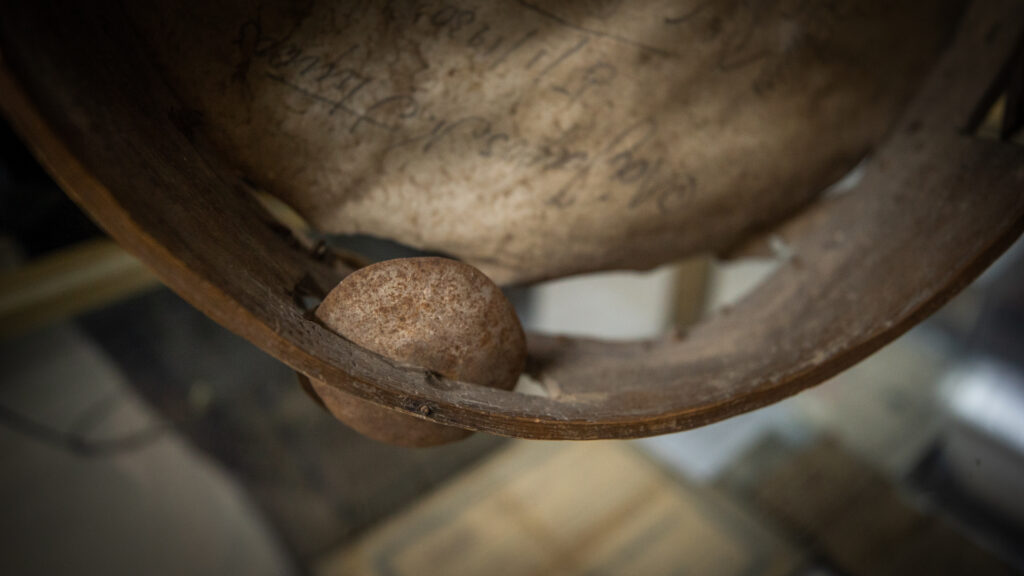
Vaso Pempe, Lazaros’ niece, remembers how, during moments of joy, the sound of the tambourine that Lazaros had brought over from Sinasos would carry through his house. ‘Uncle Lazaros loved a good party and his house was always open’, she says. When Lazaros’ second wife gave the tambourine to Vaso as a gift, she remembered all these feasts and parties that had brought the family together.
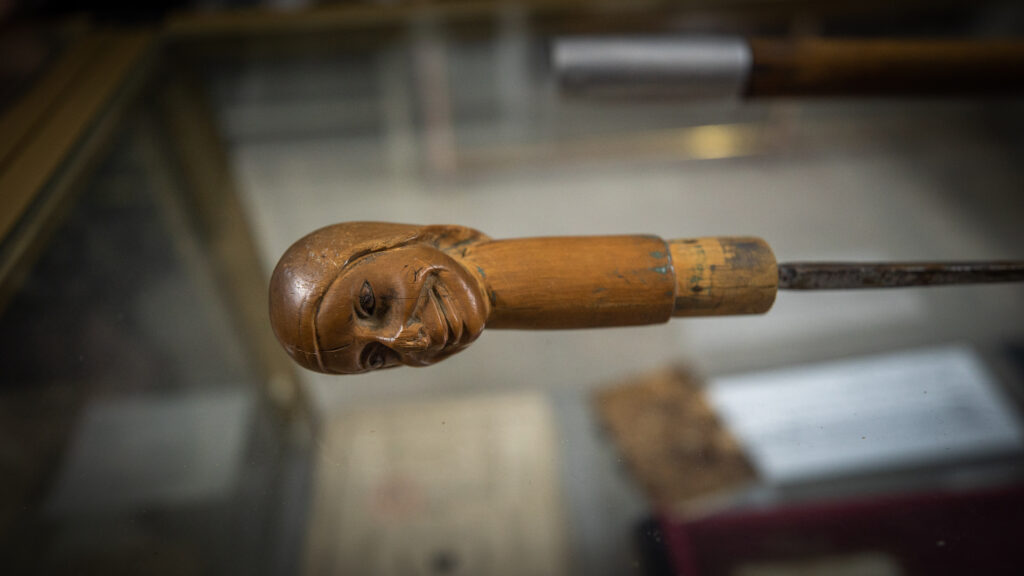
Nikolaos Pempes was born in Sinasos circa 1880. He married his compatriot, Vasiliki Ladopoulou. Like most Sinasos men, Nikolaos worked in Constantinople, regularly visiting his family who had stayed behind in Sinasos. Nikolaos and Vasiliki had three children, Lazaros in 1906, Gavriil, and Theologos in 1915, but Vasiliki died when giving birth to their third
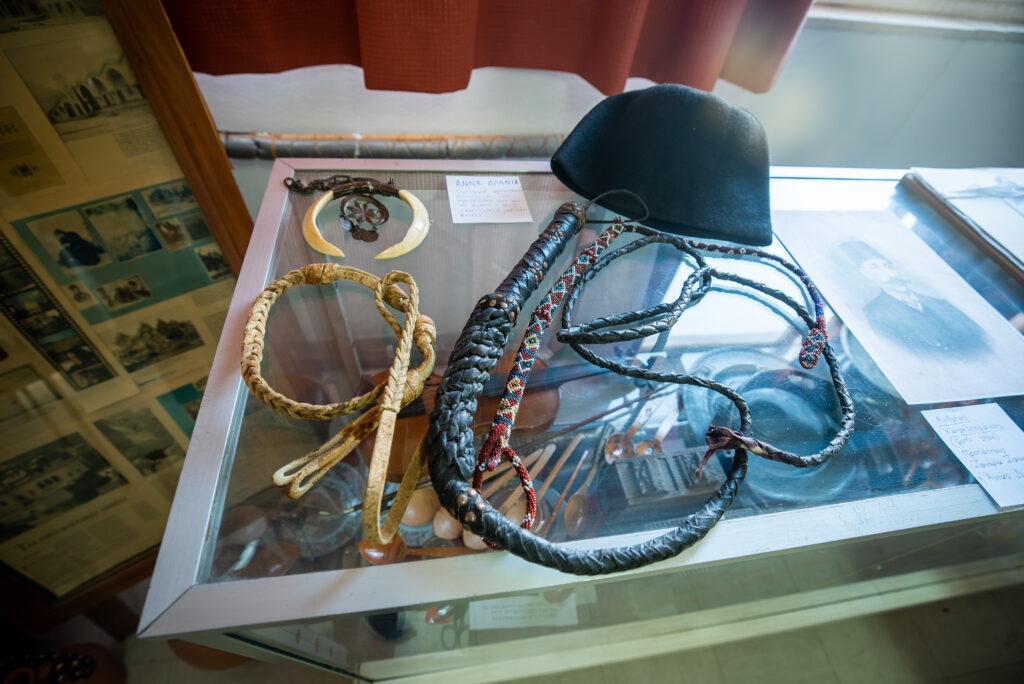
Anna Drania donated to the small museum of the ‘Nea Sinasos’ Association the horse decorations, the whip and the hat belonging to her great-grandfather Andreas Chatzitheofanous, who arrived in Greece as an exchangeable refugee in 1924. He was accompanied by his entire family and they all settled in Hydra, leaving behind their wealth and a comfortable life which Andreas tried to rebuild in Greece.









